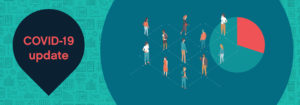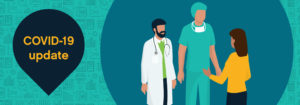By Scott Hampel, president of MedeAnalytics
Now that we’ve dealt with Megatrends one through three, we’re approaching the next set. In this group we’re exploring price transparency (and its likely difficult implementation), the increasing use of telehealth thanks to internet-connected devices and precision medicine, made easier thanks to technology.
Yet again it is data and its effective use that makes these technologies possible.
Here are Megatrends 4-6:
4. Price transparency levels the playing field
I was asked recently, “If you could snap your fingers and solve one industry problem, what would it be?”
Price transparency would have to at least be in my top three challenges to solve. Healthcare pricing is just too complicated and secretive. There’s too much variance around the price of care across the nation. Most of the US economy revolves around consumers purchasing goods and services based on known prices. It’s obviously somewhat of a Gordian Knot at this point with many historical contracts between payers, providers and the government.
The federal government is attempting to untangle the knot with new legislation designed to expose healthcare costs to healthcare consumers. “Hospitals will soon have to share price information they have long kept obscured — including how big a discount they offer cash-paying patients and rates negotiated with insurers…,” explains Kaiser Health News. “In a companion proposal, the administration announced it is also planning to require health insurers to spell out beforehand for all services just how much patients may owe in out-of-pocket costs. That measure is now open for public comment.”
There are, however, several lawsuits that have already been brought against the administration by hospitals seeking to keep the information secret.
5. Telehealth eliminates distance
While telehealth has been a part of healthcare for decades, it wasn’t until the advent of faster computers, ubiquitous internet service and easy-to-use peripherals that it really came into its own and made sense practically and financially to use as a large-scale method for education, diagnosis and treatment.
“A growing number of physicians are overcoming the barriers of time and space to deliver the right care to patients when they need it, without patients ever having to leave the comfort of their own homes,” according to the American Medical Association.
In addition to using telehealth for those who may live a long distance from a healthcare provider, the service is becoming commonplace for the times when patients who live near a hospital, clinic or urgent care center don’t feel well enough or have the time to leave their homes. Telehealth has become an additional perk offered through health insurance.
As technology continues to advance, the challenge will be keeping up with the data produced by telehealth. We will have more opportunities to use telehealth to improve patient health and wellness, but we also must keep in mind that the additional produced from provider/patient contact must be integrated into the larger health record. Tapping into serious data management solutions will be crucial to extract information from this data.
6. Precision Medicine for individualized treatment
By now many of us are familiar with and may have used DNA-based ancestry services. You swab your mouth and send it to a company that extracts and runs your DNA. Then the company returns a report detailing your heritage.
Precision medicine uses an individual’s DNA, and many other health markers, in much the same, but with a twist. DNA can be used to create customized medical treatments. “With its potential to improve treatment options and clinical outcomes for any number of diseases—including costly, hard-to-treat diseases such as cancer, neurological disorders, and rare genetic conditions—precision medicine is a growing area of interest for many health systems,” according to the Center for Connected Medicine. “Health systems are optimistic that the science will continue to advance to help providers use genetics and other individual variables to create novel treatments.”
While healthcare organizations are looking toward Precision Medicine to improve patient care and outcomes (83%), very few are ready to roll it out to patients today (70% say they have low maturity or have yet to deploy Precision Medicine), according to the Center’s report.
Nevertheless, there is a strong interest in developing more treatments using the concept. Significant amounts of healthcare data, including that used in Social Determinants of Health (SDH), will be needed to make Precision Medicine viable.
The National Institutes of Health, through its All of Us Research Program, is working to collect the “largest, richest biomedical dataset of its kind” to support Precision Medicine.
2020 and beyond
Every 2020 megatrend depends on data and analytics. Everyone involved in healthcare—from healthcare providers to payers to patients to the government—must work toward understanding, securing and managing the data they produce and control.
Healthcare, in general, is behind in terms of analytics adoption, but a big part of it is because of the complexity and magnitude of the environment in which we work.
Nevertheless, there must be a concerted effort among those involved to use analytics more. There will be hiccups along the way, more data breaches, companies that overstep or shirk their fiduciary responsibility, but there also will be many accomplishments, and new medical treatments and health services developed thanks to the use of data and analytics.
READ ALL 9 MEGATRENDS NOW
Get our take on industry trends
Avoid COVID-19 modeling pitfalls by eliminating bias, using good data
COVID-19 models are being used every day to predict the course and short- and long-term impacts of the pandemic. And we’ll be using these COVID-19 models for months to come.
Read on...Population Health Amid the Coronavirus Outbreak
In speaking with many colleagues throughout the provider and payer healthcare community, I’ve found an overwhelming sense of helplessness to the outbreak’s onslaught. This is exacerbated by the constant evolution of reported underlying medical conditions that indicate a higher risk of hospitalization or mortality for a coronavirus patient.
Read on...COVID-19 and the Financial Storm Ahead for Providers
Across the country, healthcare organizations are seeing 40%-80% declines in monthly charges with some of the most profitable services lines only seeing 20% of their normal monthly volumes during the pandemic.
Read on...3 Steps Any Healthcare Organization Can Take to Improve Enterprise Analytics
By Kristin Weir When it comes down to the most basic purpose of why organizations use analytics, it’s simple: they…
Read on...



